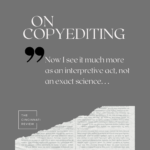We’re coming down from an AWP high—all those famous writers! Poets in the hotel bar, novelists in the line to catch cabs, babies in the tomatoes! Okay, maybe that last is from a Ginsberg poem, but we enjoyed the scene. Thanks to all who stopped by Table O22 to get a free copy of the new issue and resubscribe.
We had so much fun at the conference that we had trouble sleeping some nights. The Travelodge in downtown Chicago doesn’t supply warm milk for uneasy snoozers, so we consulted Sandy Longhorn’s poem in our latest issue, “Litany for  the Insomniac,” for advice. We knew we could turn to our trusty volunteer Garrett Cummins to learn more about the poem; he’s been singing its praises for weeks—quite literally. He’s a founding member of the department’s Justin Bieber tribute band, J and the Beliebers, known best for their ukulele-and-hand-drum version of “Baby.” He also went without sleep for three days straight once, though in that time frame, he wrote twenty-five poems, ten papers for class, four songs, and one petition for better treatment of Latin jazz guitarists by the Grammy ‘s National Academy of Arts and Sciences.
the Insomniac,” for advice. We knew we could turn to our trusty volunteer Garrett Cummins to learn more about the poem; he’s been singing its praises for weeks—quite literally. He’s a founding member of the department’s Justin Bieber tribute band, J and the Beliebers, known best for their ukulele-and-hand-drum version of “Baby.” He also went without sleep for three days straight once, though in that time frame, he wrote twenty-five poems, ten papers for class, four songs, and one petition for better treatment of Latin jazz guitarists by the Grammy ‘s National Academy of Arts and Sciences.
He got out his electric guitar for us and sang this tribute to Longhorn’s poem, to the tune of “Never Let You Go”:
Garrett Cummins: Like Laura Thompson, who recently wrote on Catherine Arnold’s “Horse,” I have two expectations when I read a poem dealing with a subject I know well. I want the work to both illuminate the experience and to linguistically intrigue me. Sandy Longhorn’s “Litany for the Insomniac” does both.
Longhorn’s use of litany is an especially apt approach to the inner spiral that insomnia visits upon the person enduring it. Linguistically enacting the nature of sleeplessness through ruminating repetition, the poet tellingly starts each of the poem’s six couplets with the word “suffer.” The first two lines, “Suffer the rage of the hourglass/ its body smacked hard and cracked,” evince the pain of a endless wakeful night, suggesting a consciousness frustrated to the point of violence, further tortured by the futility of lashing out (the cracked hourglass becomes a punishing accuser). One might also read a bit of transference in the second line—the speaker’s own body “smacked hard” by exhaustion, her mental state “cracked.”
As the poem continues, we view clockworks and the new moon in a malign light. The hyperbolic use of language—“rage,” “smacked,” “cracked,” and “slicing”—also helps capture the overblown sense of crisis that a person denied rest experiences while the world sleeps peacefully around her. Though the word “torture” does not appear, it is suggested in the “fistful of cotton” that the sheet has become, in the sweat that emerges from “beneath the skin,” as well as in the “blessing of the rooster,” which heralds night’s end. The last stanza underscores how insomnia can make even a beautiful sunrise into a villain: “Suffer the sunrise, that gold knife-thrower/ slicing open the curtain of feigned sleep.”
Sandy Longhorn’s “Litany for the Insomniac” insightfully expresses, through word and form, how insomnia affects the body of the sufferer and illustrates the broken body insomnia leaves in its wake.










